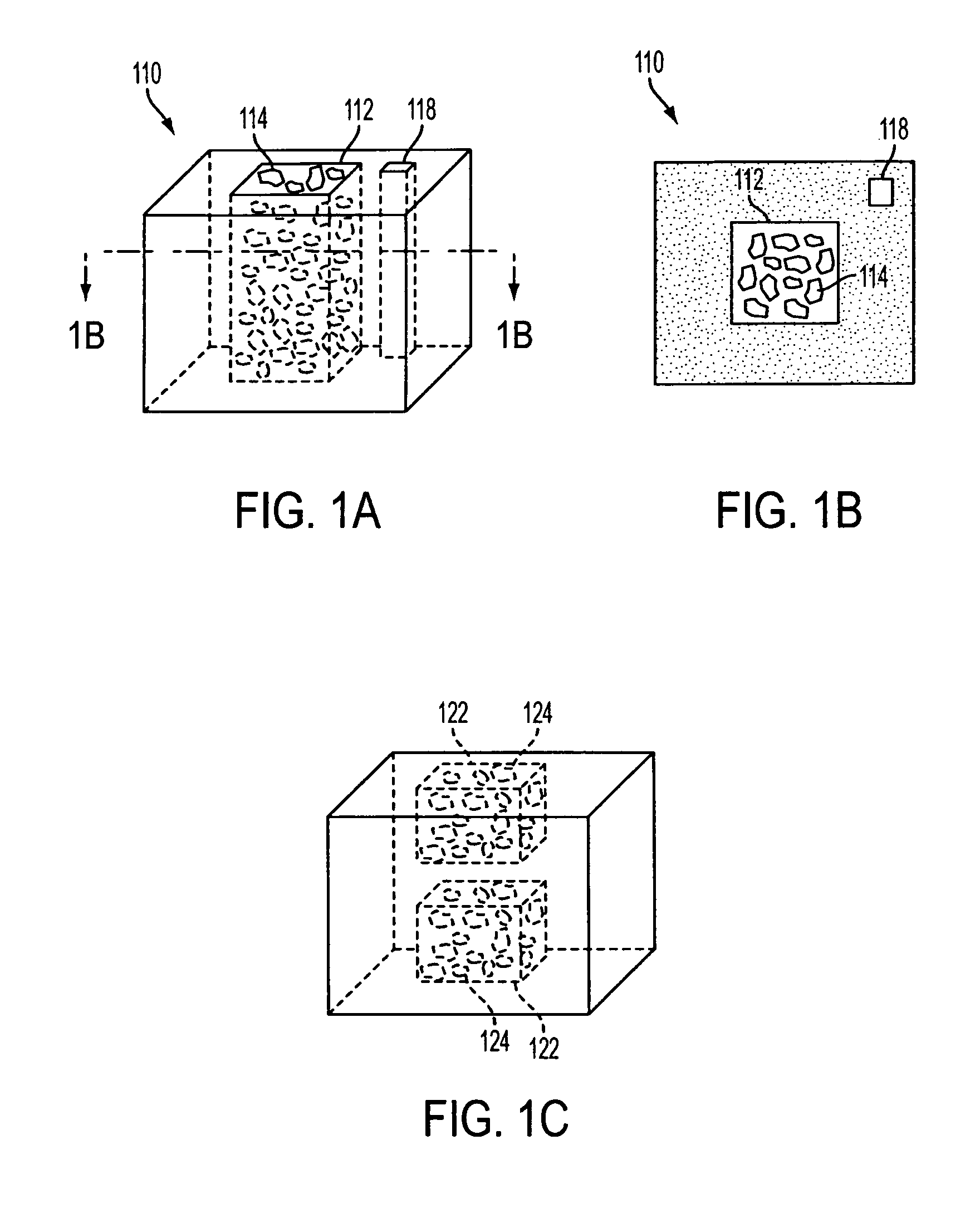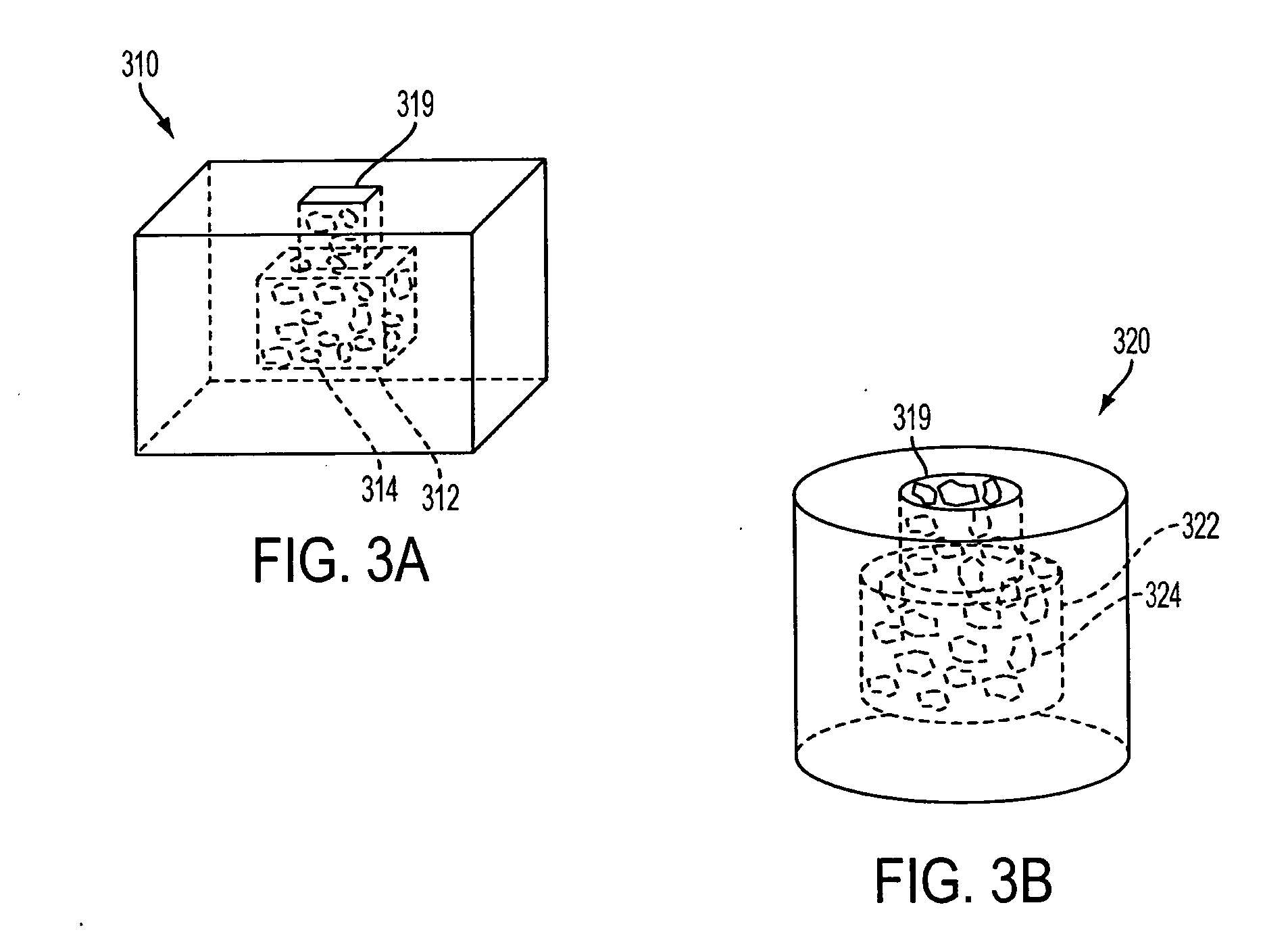Implantable biostructure comprising an osteoconductive member and an osteoinductive material
a biostructure and osteoinductive technology, applied in the field of osteoinductive materials, can solve the problems of conflict or mismatch between dimensional scales, only applicable to osteoinductive substances, and not being able to meet both requirements simultaneously
- Summary
- Abstract
- Description
- Claims
- Application Information
AI Technical Summary
Benefits of technology
Problems solved by technology
Method used
Image
Examples
Embodiment Construction
[0023] The invention includes a biostructure having an overall shape. The biostructure may, first of all, comprise a matrix which is porous. The pores may be characterized by pore sizes which may be in the range of approximately 1 micrometer to approximately 1000 micrometers. In certain embodiments, the pore size distribution has a peak between 50 and 100 micrometers. In one embodiment the matrix may comprise particles which are partially joined directly to each other but still leave some space between themselves in the form of pores. In another embodiment the matrix may comprise particles which are joined to each other by another substance(s). In any embodiment the matrix may be osteoconductive, such as by virtue of the geometry and / or composition of the matrix.
[0024] The matrix may further include macroscopic channels which are suitable to be occupied by particles of DBM. The macroscopic channels may have cross-sectional dimensions which, first of all, are greater than approximat...
PUM
| Property | Measurement | Unit |
|---|---|---|
| pore sizes | aaaaa | aaaaa |
| pore sizes | aaaaa | aaaaa |
| size | aaaaa | aaaaa |
Abstract
Description
Claims
Application Information
 Login to View More
Login to View More - R&D
- Intellectual Property
- Life Sciences
- Materials
- Tech Scout
- Unparalleled Data Quality
- Higher Quality Content
- 60% Fewer Hallucinations
Browse by: Latest US Patents, China's latest patents, Technical Efficacy Thesaurus, Application Domain, Technology Topic, Popular Technical Reports.
© 2025 PatSnap. All rights reserved.Legal|Privacy policy|Modern Slavery Act Transparency Statement|Sitemap|About US| Contact US: help@patsnap.com



